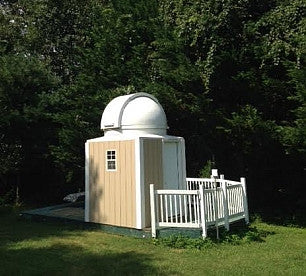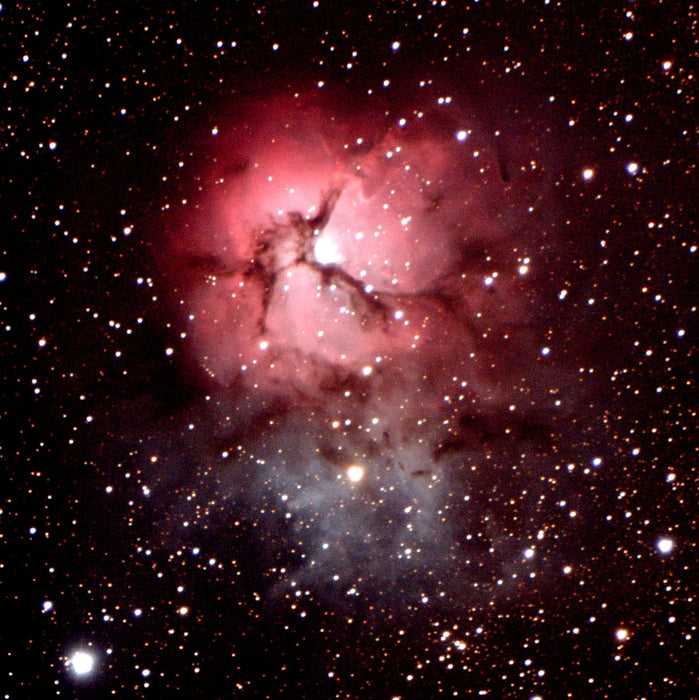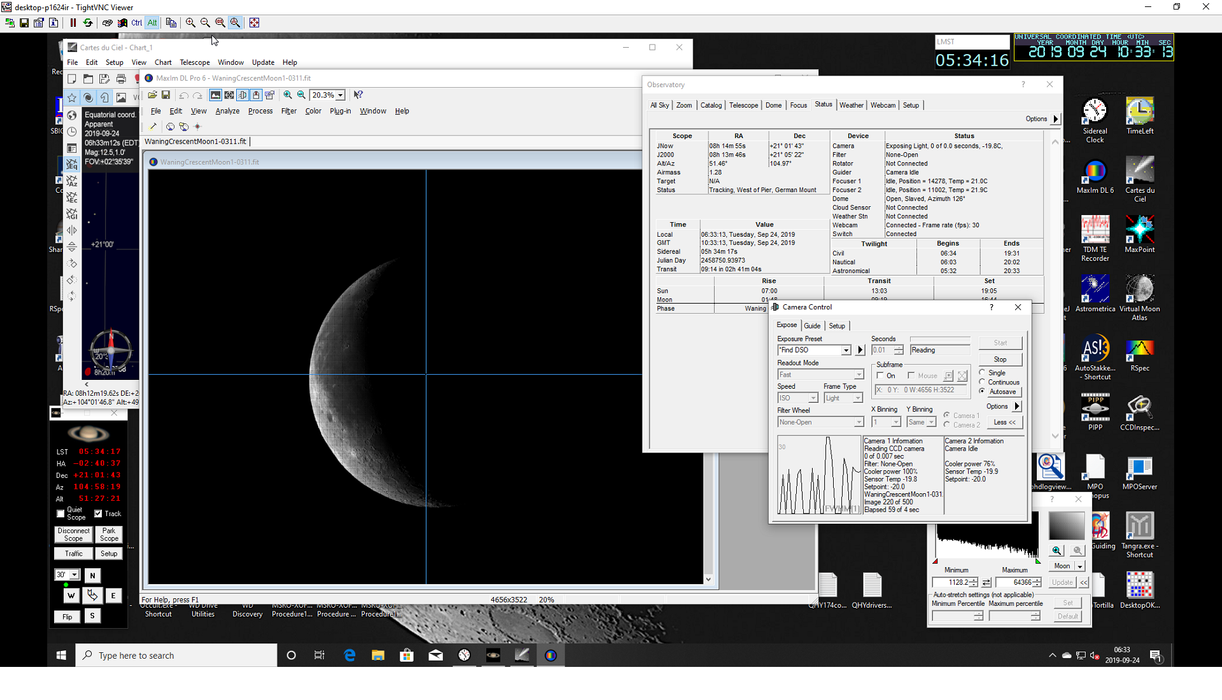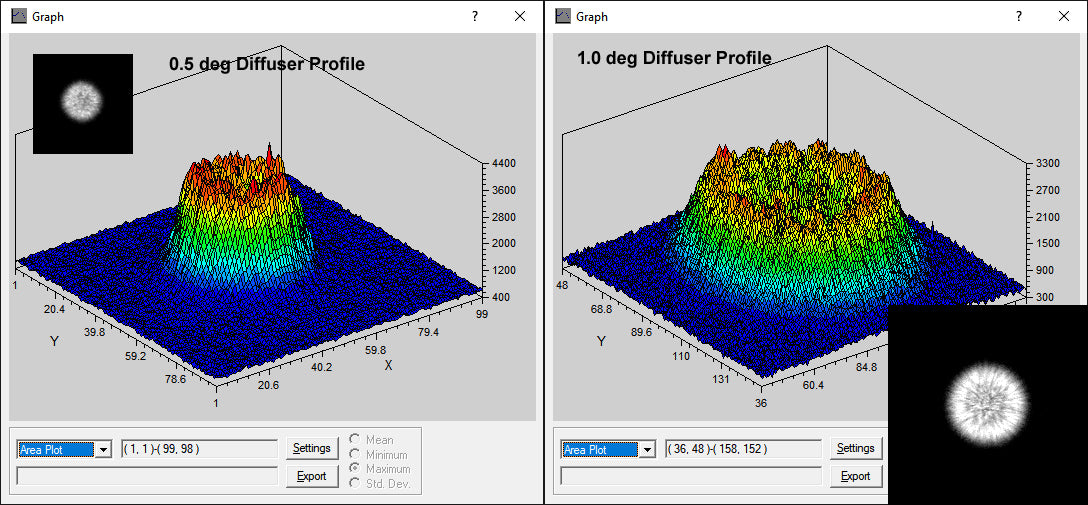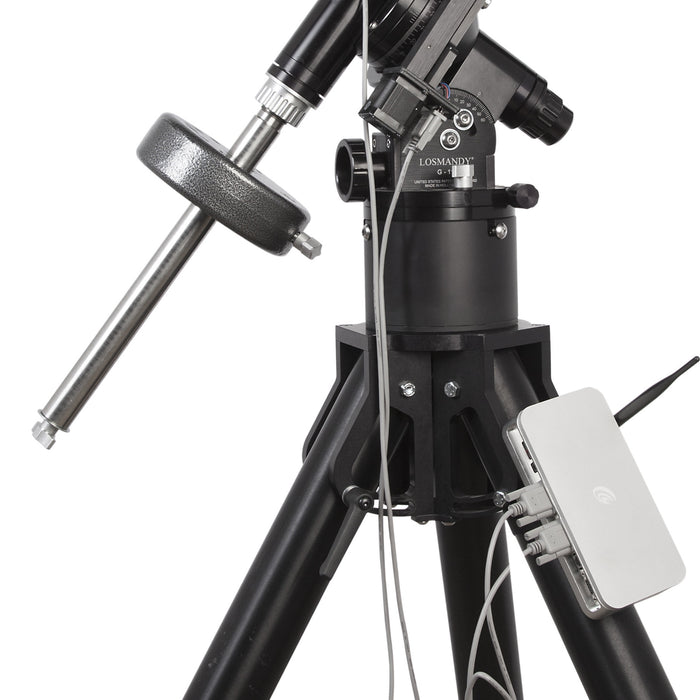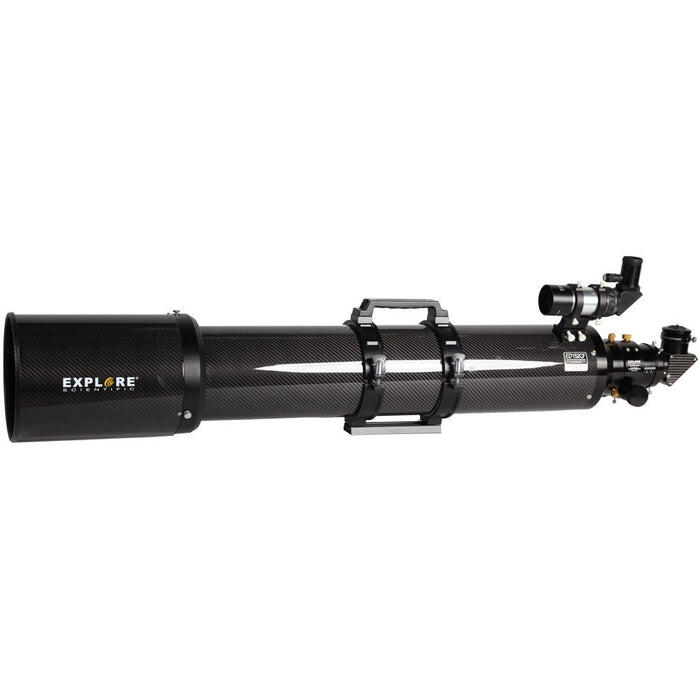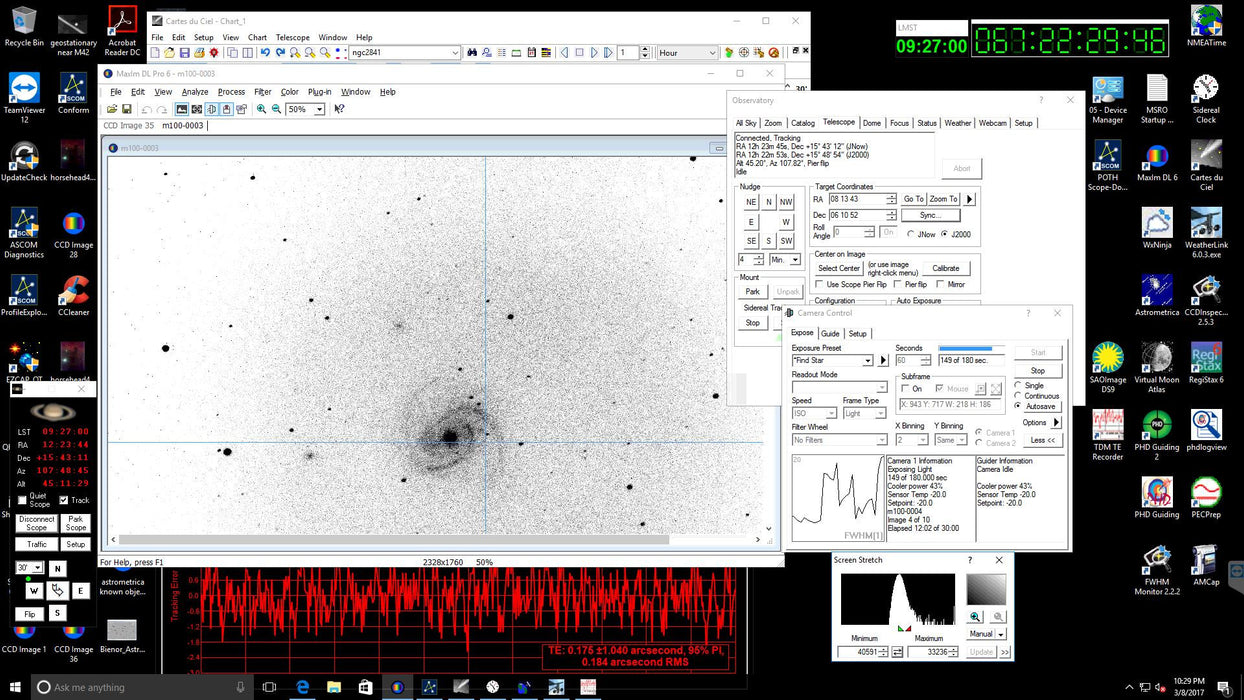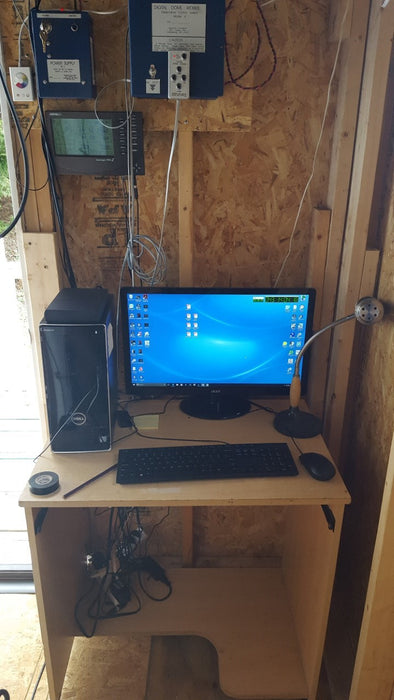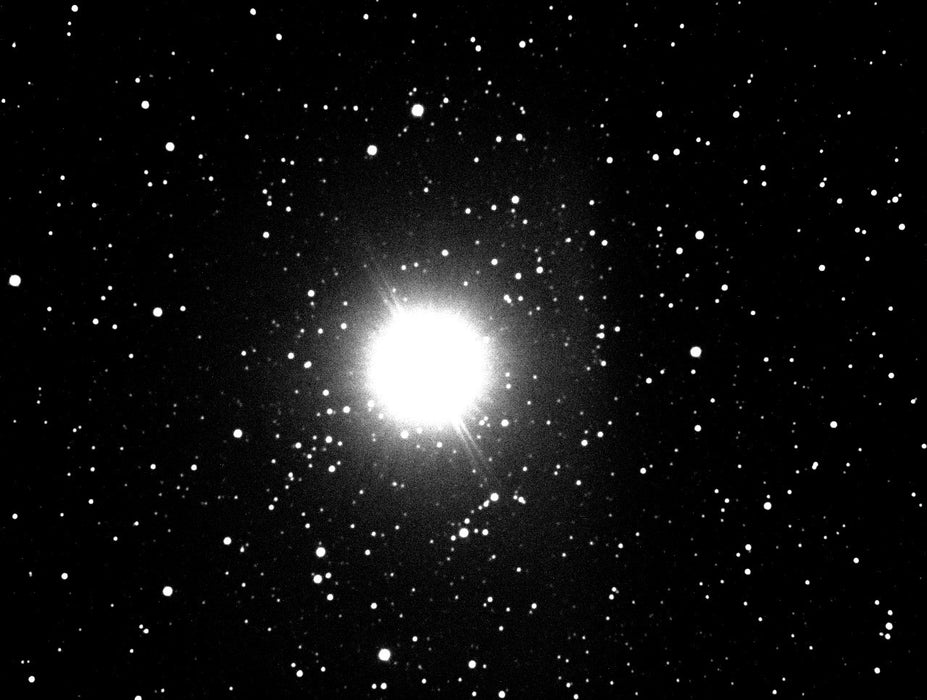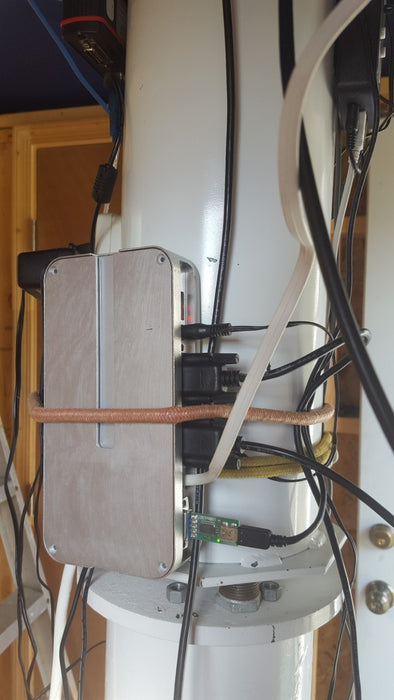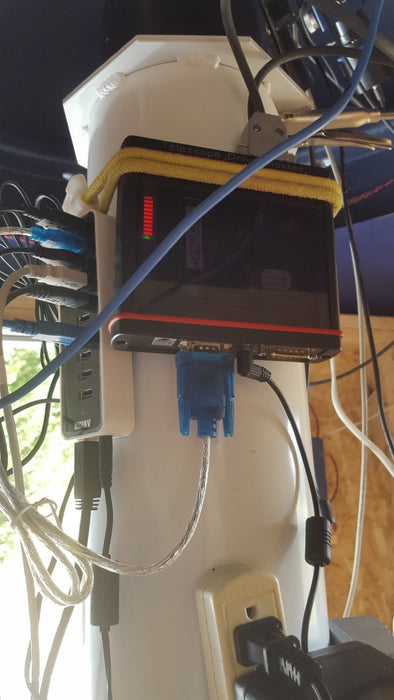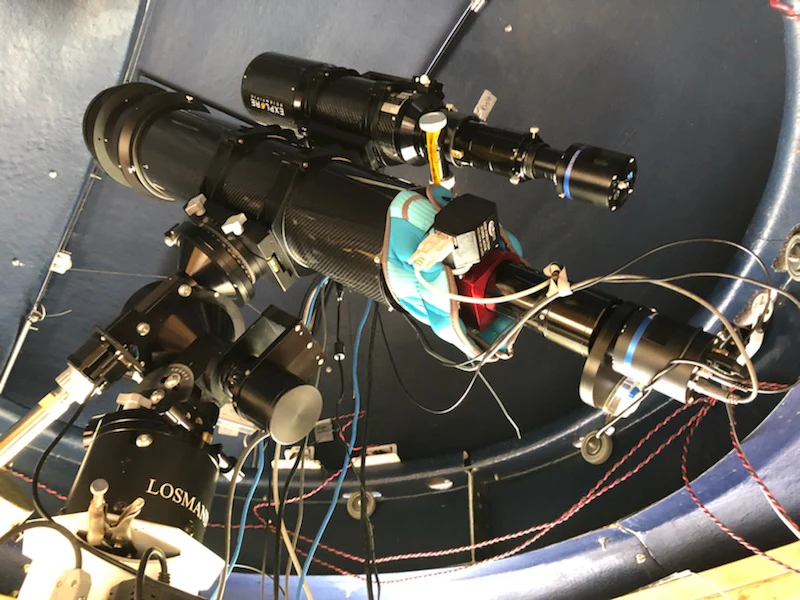
Live Internet Access - Make Astrophotographs while Controlling an FPL-53 165mm ED APO using the PMC-Eight via Remote Telescope Operation
All pricing in USD
Experience and control the PMC-Eight GOTO System and make astrophotographs from anywhere in the world, by live Internet access to the Mark Slade Remote Observatory (MSRO) provided by MSRO Science, Inc.
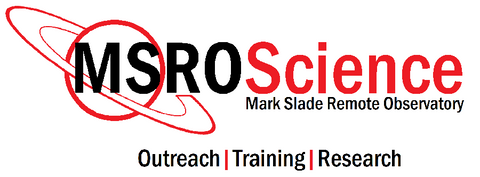
Every month during the year, on weekday and weekend evenings, remote access is scheduled, weather permitting, for individuals or groups.
This experience, perfect for the beginner and experienced astronomer alike, includes orientation on how to use Explore Scientific's PMC-Eight™ Telescope Control System on a Losmandy G11 Equatorial Mount, complete with the Telescope Drive Master (TDM) for superior tracking performance. You will also learn how to use an astronomical CCD camera (choose between a QHY163C camera with Color Filter Wheel mounted on the ES 165 FPL-53, or a QHY-174M camera mounted on the ES 102 FCD100 for high-speed planetary work).
Unlike most other remote observatory services, this is a one-on-one experience with an MSRO Astronomer where you will actually control the telescope and the camera, and not just ask for an image to be made. A typical session lasts up to 1.5 hours (30 minutes of orientation and 1 hour of telescope control and imaging time).
You need to have a high-speed Internet connection, the TightVNC remote access client (you can download for free at TightVNC.com), and a computer with microphone and speakers. During your session you may enhance the experience by using Skype (download for free at www.skype.com). You will be instructed on how to configure your system and a test run will be performed prior to your session.
When you buy a ticket we will send it to you and MSRO Science, Inc VP and Assistant Observatory Director, will send you instructions on contacting the Observatory for available dates that you can choose from. He will advise you on object selection and type of data that you wish to collect (photometric, spectroscopic, or astrometric). Cloudy weather will not cancel your chance for observation, you will simply reschedule for a new date.
For anyone contemplating building your own remote observatory, those wanting to experience Explore Scientific's PMC-Eight System, or to give as a gift that is truly out of this world, this is the experience for you.
You will also find more information about scientific imaging and running a remote telescope system in these books written by Explore Scientific VP of Engineering, Jerry Hubbell.
>>Scientific Astrophotography (Springer Books 2012)
>>Remote Observatories for Amateur Astronomers (Springer Books 2015)
About MSRO Science, Inc. and the Mark Slade Remote Observatory (W54)
President MSRO Science and MSRO Director: Dr. Myron Wasiuta
VP MSRO Science and MSRO Assistant Director: Jerry Hubbell
MSRO Science Board Member and Staff Astronomer: Lauren Lennon
Location: 38 33N Latitude, 77.71W Longitude, and Altitude 300-m
IAU Minor Planet Observatory Code: W54 Wilderness Virginia
MSRO Science, Inc., a non-profit 501(c)(3) corporation, provides research opportunities and hands-on training for amateur and professional astronomers all over the world using state-of-the-art remotely operated small-telescope observatories.
Incorporated in August 2019 as a 501(c)(3) research and education organization, MSRO Science, Inc. provides services and products to the public to fulfill its mission as a public benefit corporation. Services include providing observing time on its two currently operating small-telescope observatories, MSRO-1, and MSRO-2, and training materials, including manuals, documents, presentations, and videos. MSRO Science’s instructors and subject matter experts also offer live training, seminars, and presentations about the opportunities available to the public and the research being performed at the company.
Description of Facility:
The Mark Slade Remote Observatory, managed by MSRO Science, Inc., is an astronomical observatory that was made possible by generous donations from the estate of Mark Slade, the Rappahannock Astronomy Club (RAClub.org), and from donations of private individuals in the Fredericksburg, Virginia region. Its mission is to serve as both a training and research facility for anyone interested in astronomy and astronomical research, and is available for use by members of the Rappahannock Astronomy Club, high-school and college students, and members of the general public. The observatory is operated by MSRO Science's observatory staff. who oversees funding, coordination and approval of observation requests, and development of future mission planning. The day-to-day operations and maintenance of the observatory, scheduling of approved observation requests, and training of users are the responsibilities of the MSRO Director and Assistant Director.
>>Listen to Dr. Myron Wasiuta and Jerry Hubbell talk about MSRO and the community it serves.
>>Download the MSRO Science paper on the Engineered Diffuser™ published by the SAS in the 2019 Proceeding of the Society for Astronomical Sciences Symposium on Small Telescope Science
The main instrument is an Explore Scientific ED165-FPL53 Air-Spaced Triplet on the Explore Scientific/Losmandy G11 PMC-Eight™ Equatorial Mount with the Telescope Drive Master (TDM), and a QHY-163C (one shot color) for imaging with the following filters: luminance, red, v-band photometric, Engineered Diffuser™, and a spectroscopic grating with a resolution of 11 Angstroms/pixel or a QHY-174M monochrome camera . Exposures up to 300 seconds are possible with control via Telescope Drive Master. Typical star images in good seeing at this exposure time have FWHM values of about 3-4 arc-seconds. With careful attention to calibration and support frames, stars to magnitude 17 can be reached. Observations are possible only between +90 to +20 degrees altitude. In addition, there are limitations to the local horizon that might further limit visibility depending on the target™s Hour Angle.
The main computer in the observatory is remotely controlled using the desktop sharing program TightVNC. The program Maxim DL V6.14 is used to operate the observatory, telescopes and cameras. Star charting and telescope pointing is done using Cartes du Ciel connected to and controlling the PMC-Eight. MSRO can perform high-precision photometric and astrometric measurements, and also low-resolution spectroscopic measurements of bright stars.
Currently, the MSRO Science Team is involved with high-precision measurements of exoplanet transits and is a member of the NASA Transiting Exoplanet Survey Satellite (TESS) Follow-up Observing Program Working Group (TFOP WG). The MSRO Science Team submits their observations to the TFOP WG Seeing-Limited Group (SG1)..
CA Residents Prop 65 WARNING(S)

